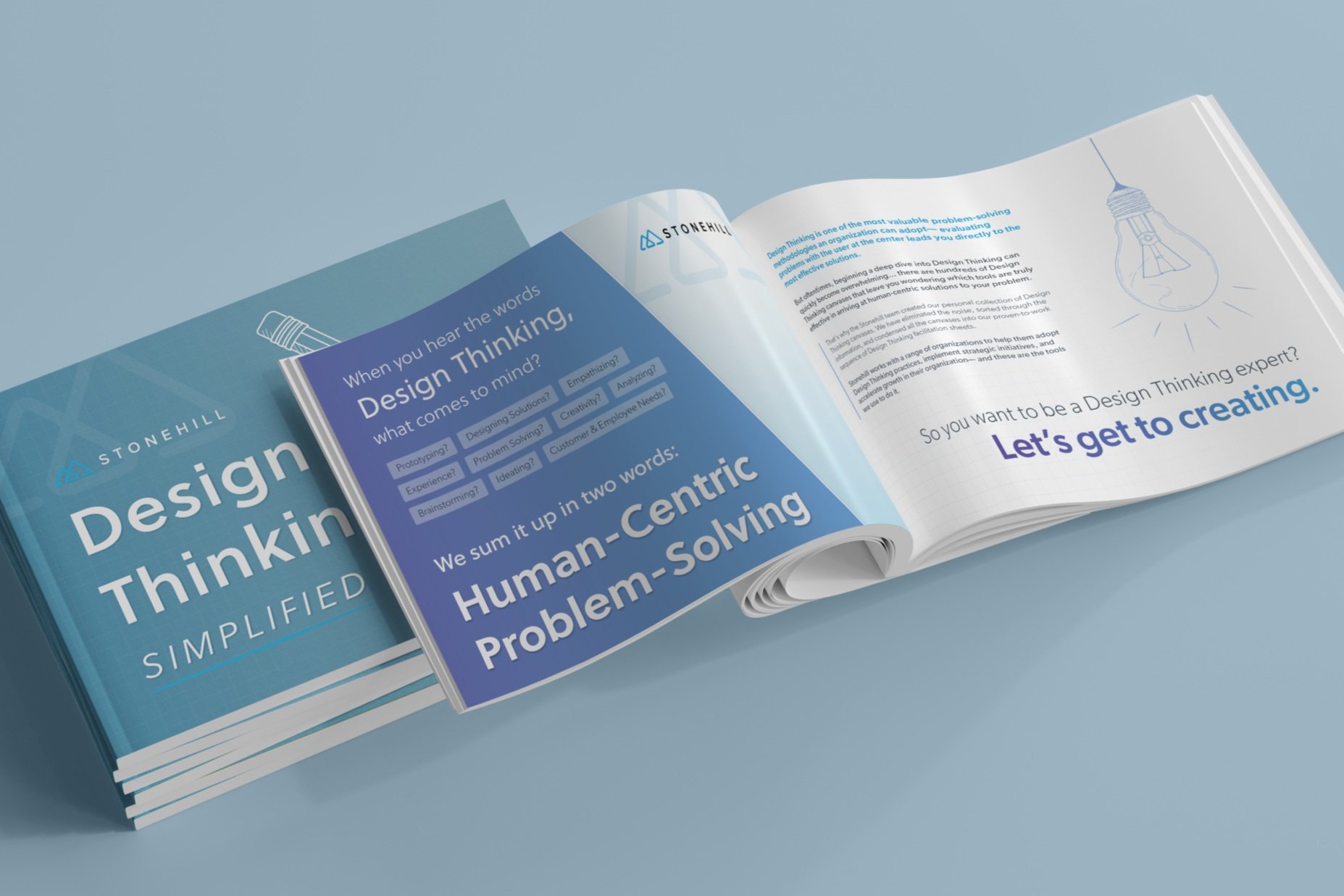5 Design Thinking Tools to Kick-Start Your Next Innovative Project
If your business is looking to adopt a Design Thinking methodology – congratulations! Design thinking is one of the most valuable methodologies an organization can adopt to help efficiently and effectively create products, solutions, and user experiences that your customers will love.
However, initiating a Design Thinking approach can be overwhelming. Where do you start?
Fortunately, Stonehill has done some of the heavy liftings for you, creating and assembling a Design Thinking toolkit, with easy-to-use worksheets that can help your team successfully navigate this proven process.
Here are five key tools you need to start your Design Thinking journey at your organization.
Empathy Map
An empathy map helps you understand not only who you are solving the problem for, but also their thoughts, feelings, habits, opinions, and motivations, so you can cater your solution specifically to fit their needs. Our worksheet helps your team develop detailed personas that go beyond demographics and explore things like goals, personalities, and expectations.
Customer Journey Map
A customer journey map helps you analyze every interaction your persona has with your business, identifying all the stages in your buyers’ journey from attraction through retention. Your team can work together to determine their objectives at each stage, the tasks and tools involved, outcomes and more. This will help you identify where customers are experiencing pain points, so you can work on creating a seamless and streamlined user experience.
Problem Statement
Once you understand who your customer is and the journey they are taking, you can determine what problem you are trying to solve. Try to dig down beyond the obvious, continually asking questions to refine the problem. Look to end up with a problem statement that follows this simple template:
(User/Customer) needs a way to (verb) because (surprising insight).
The Five Whys
To ensure that you’ve discovered the root problem, write down your problem statement and ask your team, “why is this true? What caused this problem?” When you get that answer, ask why again. Continue progressing through the five whys (it may even take more than this) to unearth the true problem.
Rapid Ideation
Finally, it’s time to brainstorm solutions to your problem. Come up with 6 ideas or ways to address the problem, and then, write down the best feature of each idea. Then you can come up with a prototype solution that combines those best features into a solid, human-centric solution.
Need Help Getting Started?
The Stonehill team has vast experience helping organizations use design thinking to create strategies and successfully implement the human-centric solutions.
We’ve also created a suite of tools to help you successfully navigate the design thinking process.
To learn from our team of design thinking experts and help maximize your team’s efforts, contact us today!

